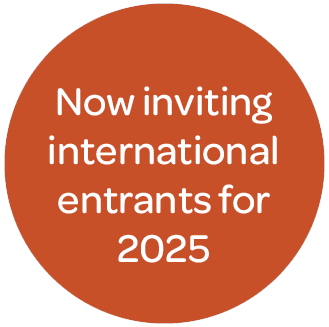Digital Transformation vs Digital Reinvention - CitizenM Show the Benefit of Looking 'Outside-In'
Deep Blue Thinking – 4 March 2019
Source View from the Blue
We read and hear so much these days about digital transformation and how important it is for the businesses to survive. All too often, however, these initiatives are dominated by attempts to strip cost out of the business model rather than a genuine focus on transforming the customer experience.
A couple of recent travel experiences have put this into sharp focus for me and crystallise the challenge mass market brands have in competing against premium or luxury players at one end and digital innovators on the other.
I am lucky enough to have recently returned from honeymoon which we booked through British Airways Holidays. The holiday experience with BA is ‘light touch’ but, one could argue, probably too light touch and too one size fits all for the range of products they are selling. For a premium holiday costing thousands of pounds, the only communication from BA was an e-mail enclosing a voucher some seven months before departure. Of course by the time we get to fly, we’re scrabbling around trying to find the mail buried in the inbox – the whole journey felt stuck in the middle between a digital journey (where I would have expected a voucher to add into my Wallet on my iPhone) and a dated, analogue one where I have to print stuff out.
That aside, there was no attempt to build any sense of excitement or anticipation in the holiday itself. This is fine if you are selling a £50 car rental or an overnight stay at an airport hotel but not where you’re selling a product which goes head to head against the likes of Kuoni and Hayes and Jarvis. All in all it was symptomatic of a brand which is struggling for identity in the face of premium carriers on the one hand and low cost carriers on the other. BA has done a lot to raise its game on the communication front (from the Change for Good safety videos to the recent 100 campaign) but the core experience is sadly lacking.
It was great then to have my faith restored by next trip – a stay in a CitizenM hotel. For those of you not familiar with CitizenM , they have established hotels in big cities (e.g. London, New York, Paris and Amsterdam) targeting travellers on city breaks or professionals on short business trips. There are undoubtedly compromises to be made staying in a CitizenM in terms of room size and the pod style bathrooms but the interesting thing is that the whole journey has been built bottom up with a specific journey in mind.
Entrepreneur Rattan Chadha claims he came up with the idea for CItizenM when he was working at Mexx and saw a lot of buyers who needed to travel a lot on a tight budget but hated the Holiday Inns of the world. The impressive thing about CitizenM is the thought that’s gone into creating not only a digital journey but a journey that has been designed around the needs of a specific customer type. To some extent what’s not included is as interesting as what is; why include peripheral elements which the target market simply don’t value.
Chadha cites things like chocolates on pillows as being an example of what’s left out but the changes are much more significant than that. On the one hand, the check in process has taken inspiration from the likes of low cost airlines – scan the pass on your phone and print your own room key. However, unlike so many airlines this isn’t at the expense of friendly , helpful staff there to guide you if anything goes wrong and also offers real benefits to the traveller – the first touchpoint is complete in under a minute. They have also removed any nervousness from the next step in the journey (you know that bit where you tentatively peer round the door to see what your room is like!). All the rooms are the same configuration and the same price – you know exactly what you’re going to get.
The One Minute Self Service Check In
Secondly, whilst many CitizenM guests are undoubtedly there for work, in room facilities are pretty cramped for a workspace. However, undoubtedly, Chadha and his team have taken inspiration here from the trends in workspaces more generally. There might not be a sizeable desk in each room but there is a bright and airy communal space which is full of people working, alongside people eating and drinking at all times day and night. Less Regus, more WeWork. The same is true with other costly ‘high touch ‘ services like room service. Spend anytime in a CitizenM bar and you’ll witness guests picking up a couple of beers or glasses of wine to take back to their room – this segment would rather get it now than pay a large premium for a frustrating wait for the room service waiter to arrive.
Third Space Working in Action at CitizenM
Crucially though, none of this comes at the expense of personality. The experience feels fun and engaging and there is a clear tone of voice to every piece of copy. The CRM programme has clearly had a lot of thought put into it and pre-arrival mails feel genuinely useful rather than cynical attempt at cross sell/ up sell. - they highlight things to do in the local area or features of the hotel and , as a customer the ‘budget’ experience of CitizenM somehow feels far more rewarding than the ‘premium’ experience of BA.
So why would have CitizenM succeeded where brands like BA have fallen so far short? As a new entrant with no legacy cost structures, they’ve obviously been able to re-invent the journey from the bottom up. However, more significantly it feels like they have thought ‘outside in’. The competition for this segment isn’t against another hotel but increasingly against the likes of AirBnB so how can you design an experience which makes staying in a hotel ‘cool’ again (Note to self: clearly I’m not if I’m using that word) when finding a steal on AirBnB gets you instant cache?
Tellingly, Chadha’s background came from outside the category, potentially allowing him spot opportunities that those entrenched in the category found harder to see. This external perspective has been followed through into staffing where CitizenM recruit from outside the hospitality industry, looking at talent pools such as drama schools and recruiting on behaviours rather than previous hospitality experience.
Whilst these two examples are in the travel sector, I’m sure we can all think of similar scenarios in other categories – fashion retailers struggling against ASOS, cosmetic brands struggling against direct to consumer propositions, grocers fighting Aldi and Lidl etc.
Diagnosing the problem, however, is easy; getting to a solution is much more challenging. How can innovation processes within the business genuinely start with the consumer and get participants to leave existing pre-conceptions at the door? How can product managers ‘re-learn’ the category through the eyes of the consumer not through the eyes of the P&L? Whilst only part of the answer closing the distance between the decision makers and consumers is critical. In an environment where all businesses are awash with data, we need to break down the barriers and ensure brand managers are spending meaningful time with their target consumer.
For some reason, entrepreneurs like Chadha just seem to get it – they listen, they identify the problem and they start to create the solution. For the rest of us, however, investing time and energy in more structured programmes is critical. This doesn’t necessarily mean investing in expensive research programmes but it does mean ensuring that teams need to be out observing, listening and talking to consumers and getting out from the safety of their desk...
Advertisement
Get the latest MRS news
Our newsletters cover the latest MRS events, policy updates and research news.














